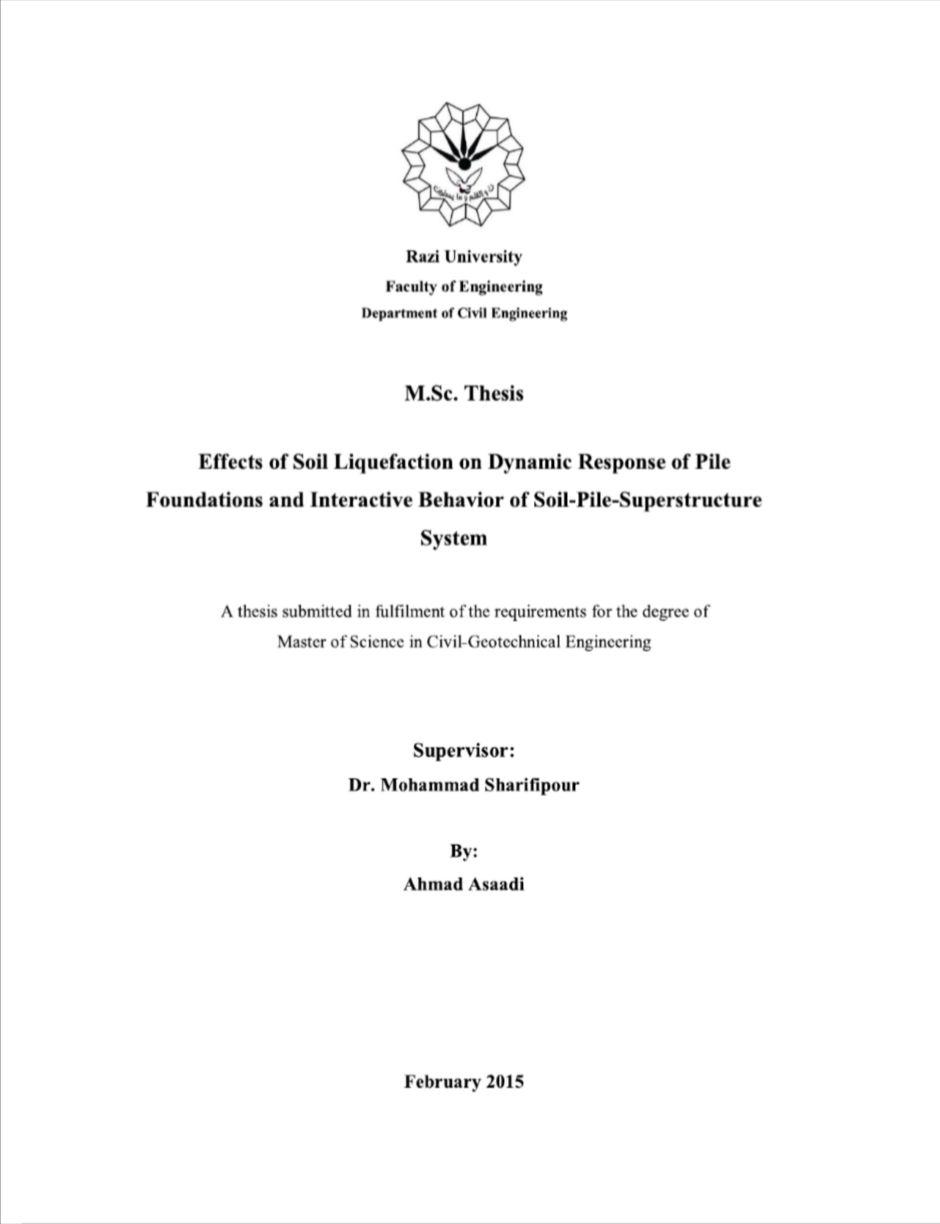M.Sc. Thesis

Abstract
The prediction of liquefaction and resulting displacements is a major concern for earth structures located in regions of moderate to high seismicity. This is particularly so for superstructures where large displacements and other types of geotechnical instability, could lead to life safety concerns. Previous studies show that soil liquefaction induced large lateral displacement has imposed damage to many structures supported on pile foundations during previous earthquakes. Pile foundations are originally designed to transfer the vertical loads. For this reason, piles are relatively vulnerable to lateral loads such as those imposed by ground shaking during strong earthquakes. In the case of soil liquefaction, the pile vulnerability is particularly conspicuous since the loss of strength and stiffness in the liquefied soil results in a nearly complete loss of lateral support for the embedded piles. The liquefied soil acts such a viscous fluid and experiences valuable displacements. This behavior can cause very large loads on pile foundations, both from inertial loads from the superstructure and kinematic loads from liquefied soil, hence inappropriate and unsafe design could leads to failure and severe damages to the pile foundations. This dissertation describes the results of a numerical study on the dynamic response of pile foundations in liquefying soils during earthquake. A nonlinear effective stress analysis incorporating an advanced constitutive model is conducted using a 2D plain strain finite difference program FLAC, to modeling liquefying soil-pile-superstructure system. In order to validate the accuracy of the numerical modeling, an experimental 1-g shaking table results of pile foundations in liquefiable soil is simulated to demonstrate the capability of the model for reliable analysis under dynamic loading. Thereafter effect of several variables on the dynamic response of single pile in liquefied soil is investigated by implementing a wide parametric study. In this regard, three different primary soil profiles are considered. The effects of soil relative density, pile length, boundary condition of pile head, thickness of liquefying soil layer, and intensity of the input ground motion are considered. The effects of superstructure loads are also considered to evaluate inertial soilstructure interaction. In addition, the influence of lateral distance of contiguous piles in twodimensional pile group, called “shadowing effect” is studied especially. The results of the parametric study accomplished in this dissertation provided a better insight into dynamic behavior of piles in liquefiable soil and some parameters have be known as key parameters. [Download Link]
